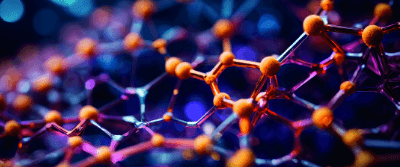Celebrate the 2023 Thermo Fisher Scientific Junior Innovators Challenge Award Winners

By Kylie Wolfe
Last fall, 30 students participated in the Thermo Fisher Scientific Junior Innovators Challenge (Thermo Fisher JIC) Finals Week in Washington, D.C., which brought together sixth, seventh, and eighth graders from across the United States for a week of STEM activities and team projects. Finalists competed for over $100,000 in awards, including a $25,000 grand prize.
The Thermo Fisher JIC, a program of Society for Science, is the nation’s premier middle school science, technology, engineering, and mathematics (STEM) competition and reaches 65,000 students annually through affiliated science and engineering fairs.
Meet the 2023 Top Award Winners
Finalists competed for the following cash awards. Each award had a different focus, including mastering STEM subjects, improving the community, demonstrating leadership skills, and more.
Thermo Fisher Scientific ASCEND (Aspiring Scientists Cultivating Exciting New Discoveries) Award—$25,000
Shanya Gill, a sixth grade student from San Jose, California, was inspired to build a faster, more accurate fire detector after a restaurant near her house burned down. What she created could decrease emergency response times, fulfilling her goal of making buildings safer while preventing disasters.
Broadcom Coding with CommitmentTM Award—$10,000
Keshvee Sekhda, an eighth grade student from Sugar Hill, Georgia, co-developed a mobile app that uses photos and health scan images to help identify breast, lung, and skin cancer.
DoD STEM Talent Award—$10,000
Maya Gandhi, an eighth grade student from Anaheim, California, constructed microbial fuel cells using four different materials to determine which would boost electricity production.
Lemelson Award for Invention—$10,000
Adyant Bhavsar, a seventh grade student from San Jose, California, built a triboelectric nanogenerator to increase the reliability of sensors that monitor for natural disasters.
Robert Wood Johnson Foundation Award for Health Advancement—$10,000
Elizabeth Louise Olvera, a seventh grade student from Goleta, California, studied the absorbency of six natural fiber-based fabrics that could be used to make more affordable and reusable menstrual pads.
Meet the 2023 STEM Award Winners
Finalists could also be awarded first or second place in STEM subject areas. First place winners received $3,500 and second place winners received $2,500 to attend a STEM summer camp.
Science Award
- First Place: Veronica Howard, an eighth grade student from Redwood City, California, tested organic and conventional produce to see if pesticides were more abundant on one or the other.
- Second Place: Elizabeth Shen, an eighth grade student from Portland, Oregon, found a low-cost way to determine water’s rate of diffusion and modify its speed.
Technology Award
- First Place: Advait Badrish, a seventh grade student from Redmond, Washington, built an app that can be used to analyze heart sounds to check for abnormalities.
- Second Place: Chloe Svetlana Fierro, a sixth grade student from El Paso, Texas, analyzed the thermal performance of cork against common insulation materials.
Engineering Award
- First Place: Krishna Bhatt, an eighth grade student from San Jose, California, designed a wearable device that helps users maintain their balance to prevent falls.
- Second Place: Claire Xu, an eighth grade student from San Jose, California, and her teammate Venice Parnell used food scraps to create vegan leathers and tested each for durability and water resistance.
Mathematics Award
- First Place: Tate D. Plohr, an eighth grade student from Los Alamos, New Mexico, used computer modeling to study solar flares and the factors that affect their stability.
- Second Place: Amritha Praveen, an eighth grade student from Buffalo Grove, Illinois, measured the body’s response to music to provide effective music therapy recommendations.
Visit societyforscience.org/jic/2023-finalists/ to learn more about each student and their project.
Become a Junior Innovator in 2024
Do you find these projects inspiring and want to get involved this year?
Middle school students who place in the top 10 percent at a Society for Science-affiliated science or engineering fair are eligible to apply for the Thermo Fisher JIC. Applications are reviewed by a panel of judges who select the top 300 Junior Innovators and, ultimately, the 30 finalists who will take part in the Finals Week competition.
Visit societyforscience.org/jic/ to find your local fair and learn how to apply in 2024.
Facts About The 2023 Thermo Fisher JIC Finalists
- More than half of this year’s finalists identify as female
- The top project category was engineering
- The states with the most finalists were California, Texas, and Georgia
- Over half of the finalists attend public schools